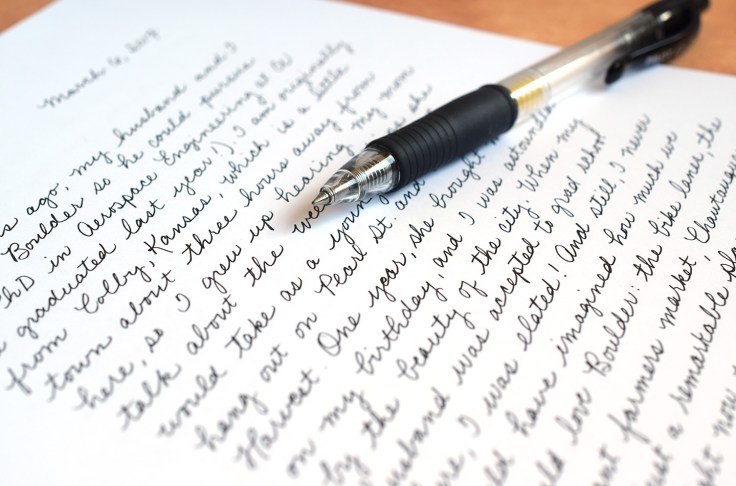
Welcome to our article on 12 essential novel writing tips, where we delve into the art of mastering plot structure, character arcs, and more.
Whether you're a seasoned writer looking to refine your skills or a beginner embarking on your literary journey, this guide offers valuable insights to help you craft a compelling story.
From understanding the three-act structure to perfecting your manuscript through editing and revising, we provide expert advice to elevate your writing and captivate your readers.
Understanding the Three-Act Structure
Frequently overlooked by inexperienced writers, understanding the three-act structure is a fundamental aspect of crafting a compelling and well-structured novel. This narrative structure divides a story into three distinct sections, each serving a specific purpose and contributing to the overall arc of the plot.
The first act introduces the characters, setting, and conflict, setting the stage for the story to unfold.
The second act expands on the conflict and develops the tension, often presenting obstacles and challenges for the protagonist to overcome. It is during this act that creating dynamic tension becomes crucial, as it keeps the readers engaged and invested in the story.
Finally, the third act brings resolution and conclusion to the narrative, tying up loose ends and satisfying the reader's desire for closure.

Developing Complex and Compelling Characters
Significantly, developing complex and compelling characters is essential for creating a rich and engaging narrative in a novel. By crafting multi-dimensional characters, authors can captivate readers and make them emotionally invested in the story.
Here are four key techniques to consider when developing characters:
Flesh out their backgrounds: Give your characters depth by exploring their past experiences, motivations, and desires. This will help readers understand their actions and decisions.
Create internal conflicts: Characters with inner struggles are more relatable and interesting. Develop conflicting desires, beliefs, or emotions within your characters to add depth and complexity to their personalities.
Show character growth: Allow your characters to evolve throughout the story. They should learn from their experiences and undergo personal transformations, making them dynamic and compelling.
Use dialogue effectively: Dialogue provides an opportunity to reveal a character's personality, beliefs, and conflicts. Make sure your characters' conversations are authentic, meaningful, and contribute to their development.
Crafting a Strong Opening Hook
To captivate readers from the very beginning, authors should carefully craft a strong opening hook that immediately grabs their attention and compels them to continue reading. Crafting unique beginnings is essential in maintaining reader interest and ensuring that they are hooked from the first page.

A strong opening hook can take various forms, such as an intriguing question, a shocking statement, or a captivating scene. It should be designed to pique the reader's curiosity and create a sense of urgency or anticipation. By presenting a compelling opening, authors can establish the tone and set the stage for the story that will unfold.
It is through the mastery of crafting a strong opening hook that authors can truly captivate their readers and keep them engaged throughout the entire novel.
Creating Conflict and Tension
Creating conflict and tension is essential for engaging readers and driving the plot forward.
One way to achieve this is by carefully balancing character conflicts, ensuring that each character has their own unique motivations and desires that clash with others.
Additionally, pacing plays a crucial role in heightening suspense, as strategic use of slower and faster moments can create a rollercoaster effect, keeping readers on the edge of their seats.
Balanced Character Conflicts
A well-crafted narrative relies on the interplay of complex character conflicts to generate compelling tension and drive the plot forward. Balanced character conflicts not only add depth to the story but also keep the readers engaged.
Here are four essential tips for creating balanced character conflicts:

Explore character motivations: Understanding why characters act the way they do is crucial in creating internal conflicts. By delving into their desires, fears, and past experiences, you can create conflicts that feel authentic and resonate with the readers.
Vary the types of conflicts: Balance the internal conflicts with external conflicts to create a well-rounded narrative. This could include conflicts with other characters, society, or even nature.
Give characters opposing goals: When characters have conflicting goals, it creates tension and conflict. This can lead to riveting scenes and compelling storytelling.
Allow for character growth: Conflict can be a catalyst for character development. By challenging your characters and forcing them to confront their weaknesses, you can create a satisfying character arc that keeps the readers invested.
Heightening Suspense Through Pacing
As writers, it is imperative to understand that by effectively manipulating the pace of the narrative, we can heighten suspense, create conflict, and infuse tension into our stories.
One of the most powerful tools at our disposal is the use of suspenseful pacing. By carefully controlling the rhythm and speed of our storytelling, we can keep readers on the edge of their seats, eagerly turning the pages to find out what happens next.
Increasing tension through pacing involves a delicate balance of slowing down and speeding up the narrative. We can build suspense by gradually revealing information, creating anticipation and uncertainty.

Conversely, we can create intense moments of action and conflict by quickening the pace, leaving readers breathless and craving resolution.
Mastering the art of suspenseful pacing is an essential skill for any writer looking to create gripping and unforgettable stories.
Building a Solid Midpoint Twist
When it comes to building a solid midpoint twist in your novel, there are several key points to consider.
The first is the unexpected turning point that takes the reader by surprise, injecting new energy and direction into the story.
This twist should also heighten the tension and stakes for your characters, forcing them to confront new challenges and make difficult choices.
Ultimately, the midpoint twist should have a significant impact on character development, pushing them further along their arc and driving the narrative forward.
Unexpected Turning Point
To truly captivate readers and keep them engaged, authors must skillfully incorporate an unexpected turning point into their novel's midpoint, thereby creating a solid and gripping midpoint twist. This unexpected plot twist serves as a crucial moment in the narrative, where the story takes a surprising and unforeseen direction, leaving readers on the edge of their seats.

It injects a sense of excitement and intrigue, keeping the readers hooked and eager to know what happens next. Alongside the unexpected plot twist, impactful character decisions play a vital role in driving the story forward and adding depth to the narrative. These decisions shape the characters' arcs, revealing their true nature and motivations, and adding layers of complexity to the overall plot.
Heightening Tension and Stakes
While building a solid midpoint twist, authors must focus on heightening tension and stakes to keep readers engrossed in the story. Raising stakes and increasing conflict are crucial in maintaining the readers' interest and ensuring a gripping narrative. By introducing new challenges and obstacles for the protagonist, authors create a sense of urgency and suspense that propels the story forward.
This can be achieved through escalating the danger faced by the characters, introducing unexpected plot twists, or presenting moral dilemmas that force the protagonist to make difficult choices. The midpoint twist serves as a pivotal moment in the story, where the stakes are raised to their highest point, and the conflict reaches its peak.
This twist not only hooks the readers but also sets the stage for the second half of the story, leading to an even more thrilling and satisfying climax.
Impact on Character Development
A well-crafted midpoint twist has a significant impact on character development, allowing for growth, transformation, and the exploration of inner conflicts. It serves as a turning point in the story, challenging the protagonist to confront their fears, make difficult choices, and evolve as individuals.
The midpoint twist propels the narrative forward and deepens the psychological development of the characters, making them more relatable and compelling to readers. Here are four ways in which a midpoint twist can impact character growth and psychological development:
- Forces the protagonist to reevaluate their beliefs and motivations, leading to personal growth.
- Creates inner conflicts and dilemmas that test the character's moral compass and values.
- Pushes the character out of their comfort zone, encouraging them to face their fears and overcome obstacles.
- Presents unexpected revelations or challenges that transform the character's worldview and perception of themselves.
Mastering the Art of Dialogue
During the process of writing a novel, authors must master the art of dialogue in order to create engaging and realistic conversations between their characters. Dialogue techniques play a crucial role in developing character interactions and moving the plot forward. Effective dialogue should reflect the unique personalities, motivations, and emotions of the characters, while also advancing the story and revealing important information.

It should be natural and authentic, capturing the way people speak in real life, but also concise and purposeful to maintain the reader's interest. To achieve this, writers can use techniques such as subtext, where characters imply their true feelings through indirect speech, or employing verbal and non-verbal cues to convey emotions.
Skillfully crafted dialogue adds depth and authenticity to a novel, enhancing the reader's connection with the characters and their journey.
Balancing Action and Description
Balancing action and description is a crucial aspect of effective storytelling. It involves finding the right narrative pacing to keep readers engaged and invested in the story.
Additionally, incorporating sensory details can bring scenes to life and create a more immersive reading experience.
Finding Narrative Pacing
The key to achieving effective narrative pacing lies in striking a harmonious blend between action and description. By finding the right balance, writers can keep readers engaged and maintain the momentum of their story.
Here are four pacing techniques to consider when exploring narrative tension:
Vary sentence length: Mixing short, punchy sentences with longer, more descriptive ones can create a dynamic rhythm and keep readers on their toes.

Use active verbs: Opt for strong, active verbs to convey action and propel the story forward. This helps to maintain a sense of urgency and energy.
Show, don't tell: Instead of providing lengthy explanations, show characters in action and let readers infer their emotions and motivations. This allows for a more immersive reading experience.
Cut unnecessary details: While descriptions are important, it's crucial to avoid overly detailed passages that bog down the pacing. Focus on the essential elements that move the plot forward.
Engaging Sensory Details
Moreover, to create a truly immersive reading experience, writers must effectively incorporate sensory details into their storytelling while maintaining a balance between action and description.
Descriptive language is a powerful tool that engages the reader's senses, allowing them to visualize and experience the story on a deeper level. By appealing to the senses of sight, sound, smell, taste, and touch, writers can transport readers into the world they have created.
Engaging the reader through sensory details adds depth and authenticity to the narrative, making it more relatable and compelling. However, it is crucial to strike a balance between action and description. Too much description can slow down the pacing of the story, while too little can leave readers feeling disconnected.
Utilizing Foreshadowing and Chekhov's Gun
While foreshadowing and Chekhov's Gun may seem like small details in a novel, they play a crucial role in building tension and creating a satisfying narrative. These literary techniques are powerful tools that can enhance the reader's experience and keep them engaged throughout the story.

Here are four reasons why utilizing foreshadowing and Chekhov's Gun is essential in writing:
Symbolic foreshadowing: By subtly hinting at future events or character developments, authors can create a sense of anticipation and intrigue in the reader's mind. Symbolic foreshadowing adds depth and layers to the story, making it more immersive and thought-provoking.
Effective misdirection: Foreshadowing can be used to mislead the reader, leading them to believe one thing while something entirely different unfolds. This technique creates suspense and surprises, keeping the audience on their toes and ensuring they never know what to expect.
Building tension: Foreshadowing builds tension by creating a sense of impending doom or danger. By dropping hints and clues about future conflicts or obstacles, authors can keep the reader hooked, eagerly turning the pages to see how things unfold.
Chekhov's Gun: This principle states that if a gun is shown in the first act, it must be fired by the third act. In other words, every element introduced in the story should serve a purpose and be relevant to the plot. By adhering to this principle, authors can create a tightly woven narrative that feels cohesive and satisfying to the reader.
Incorporating Subplots Effectively
One must understand how to incorporate subplots effectively in order to create a well-rounded and engaging novel. Subplots play a crucial role in enriching the main storyline by adding depth, complexity, and dimension to the narrative. They allow for the exploration of different themes, the development of secondary characters, and the introduction of additional conflicts and obstacles for the protagonist to overcome.
To seamlessly weave multiple subplots together, writers can employ various techniques. One effective technique is to establish a clear connection between the subplots and the main storyline, ensuring that they are all working towards a common goal or theme. Another technique is to carefully balance the pacing of the subplots, ensuring that they complement and enhance each other rather than detract from the overall flow of the story. Additionally, writers can use foreshadowing and callbacks to link the subplots together, creating a sense of cohesion and unity.

Resolving the Climax and Denouement
How can writers effectively resolve the climax and denouement of their novel?
When it comes to wrapping up the story and providing a satisfying resolution, there are several key elements to consider.
Here are four essential tips to help writers navigate this crucial stage:
Tie up loose ends: Ensure that all major plot points and conflicts are resolved, leaving no unanswered questions or unresolved storylines.
Explore character growth: Use the resolution to show how the main characters have evolved and transformed throughout the story. Give readers a sense of closure by depicting their personal growth and development.
Create a sense of catharsis: Provide emotional release for readers by delivering a resolution that satisfies their desires and expectations.
The role of setting in the resolution: Utilize the setting to enhance the resolution, whether it's by symbolically reflecting the characters' journey or by providing a backdrop that amplifies the emotional impact of the resolution.

Editing and Revising for a Polished Manuscript
To ensure a polished manuscript, writers should meticulously edit and revise their work using a critical eye and a thorough understanding of the writing craft. Effective self-editing techniques are essential in identifying and rectifying issues such as plot holes, inconsistencies, weak character development, and awkward sentence structures.
Start by reading through the manuscript with fresh eyes, focusing on elements like pacing, dialogue, and overall coherence. Pay attention to grammar, punctuation, and spelling mistakes, as these can detract from the quality of the writing.
Additionally, seeking feedback from beta readers can provide valuable insights into areas that may need improvement. Beta readers can offer a fresh perspective and identify blind spots that the writer may have missed. Their feedback can help refine the manuscript, ensuring it is polished and ready for publication.
Tips for Getting Published and Marketing Your Novel
Successfully navigating the competitive world of publishing and effectively marketing your novel requires careful planning and strategic execution. Here are four essential tips to help you get published and market your novel:
Finding the right literary agent: Research and identify literary agents who specialize in your genre and have a track record of success. Craft a compelling query letter and submit it to the agents who are the best fit for your work.
Building an author platform: Establishing an online presence is crucial in today's digital age. Create a professional website, engage with readers on social media, and contribute valuable content through blogging or guest posting. Building a strong author platform helps you connect with potential readers and industry professionals.
Networking and attending writing conferences: Attend writing conferences and workshops to network with other authors, literary agents, and publishers. These events provide valuable opportunities to pitch your novel, gain insights from industry experts, and make meaningful connections.

Utilizing promotional strategies: Develop a marketing plan that includes book signings, virtual events, giveaways, and collaborations with other authors or influencers. Leverage social media platforms, book review websites, and email newsletters to generate buzz and reach your target audience.
Frequently Asked Questions
How Can I Effectively Use Symbolism in My Novel?
Symbolism in a novel involves exploring hidden meanings and enhancing reader engagement. By using symbols strategically, authors can add depth and layers of interpretation to their work, creating a richer and more impactful reading experience.
What Are Some Techniques for Creating a Unique and Memorable Setting?
Creating a vivid atmosphere and using cultural references are essential techniques for creating a unique and memorable setting. By immersing readers in a richly detailed world and incorporating elements that evoke specific cultural contexts, authors can transport their audience and leave a lasting impression.
How Do I Maintain a Consistent Tone Throughout My Novel?
Maintaining a consistent tone throughout a novel involves creating an atmosphere that aligns with the overall theme and using language effectively to convey the desired emotional impact. This ensures a polished and engaging reading experience.
What Are Some Strategies for Developing a Realistic and Believable Romance Subplot?
Building emotional tension and developing compelling conflicts are key strategies for developing a realistic and believable romance subplot. By creating obstacles, internal and external conflicts, and deepening the emotional connection, the author can engage the audience and bring the romance to life.
How Can I Ensure That My Novel's Pacing Keeps Readers Engaged From Beginning to End?
Maintaining reader engagement through pacing is crucial for a successful novel. By strategically building tension and incorporating plot twists, writers can keep readers hooked from beginning to end, ensuring a satisfying reading experience.
 Writing TipsCreative WritingJournalingSketching TechniquesBuying GuidesPrivacy PolicyTerms And Conditions
Writing TipsCreative WritingJournalingSketching TechniquesBuying GuidesPrivacy PolicyTerms And Conditions
